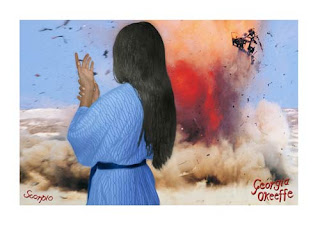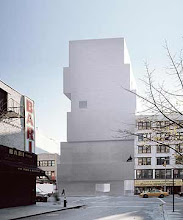
This work was made using woodblock printing on the lower sheet and photocopy transfers on the top sheet of paper. The woodblock images are not clearly visible in the photograph but can usually be seen through the opaque top layer of Japanese paper. The assignment was to create a work 'about place' and these images are taken from personal childhood experiences in Pakistan.

This woodblock print is a self portrait representing feelings of confusion and disappointment during some travels that I had looked forward to beforehand. The paper that was used is
washi (Japanese handmade paper) that my classmates and I made collectively out of plant pulp. The print has 4 layers - one layer for each colour.

This lithograph was inspired by Japanese/Chinese calligraphy which I was exposed to when living with a calligrapher in Japan and also by the Inside Out new Chinese art exhibition. I have tried writing kanji with a brush but have very poor calligraphy skills. I used a painting medium on the lithography stone, then cut back into the image which produced the white scratches in the print.

















































